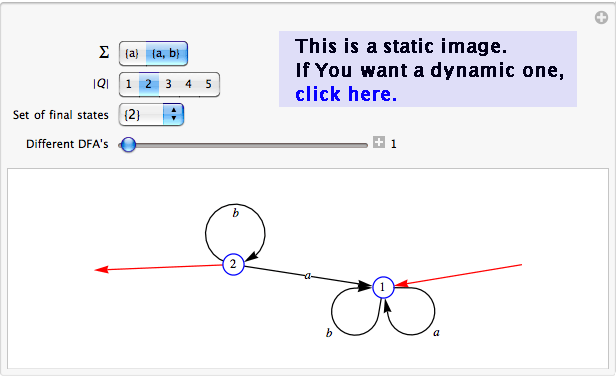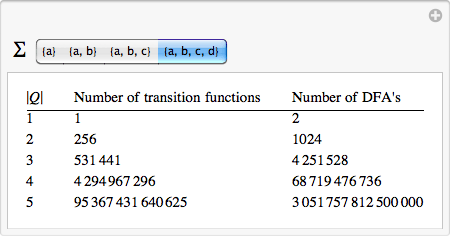
All DFA's with a given alphabet and a given set of states
How many are they?
A DFA's transition function δ is of type
![]()
where Q is the state set, and ![]() is the tape alphabet.
is the tape alphabet.
Thus δ has ![]() different pairs
different pairs ![]() of inputs.
of inputs.
![]()
Why? Below follows an explanation.
δ is uniquely characterized by the choice of outputs in δ:s input-output table.
![]()
So the number of transition functions is the same as the number of such rows of outputs.
Well, how many different rows are there?
Let’s see ….
Such a row contains ![]() cells – one cell for every input pair
cells – one cell for every input pair ![]() .
.
As the outputs are chosen from Q, there are {Q} ways to fill each cell.
Considering a whole row, cell by cell, there must be ![]() different fillings. This explains (2). Now we know how many ways there are to design a transition function δ.
different fillings. This explains (2). Now we know how many ways there are to design a transition function δ.
To construct a DFA with a certain transition function δ, let us always denote the initial state by 1, and other states by greater numbers. All we have to do to get a complete description of such a DFA is to decide which states should constitute the set of final states. As every subset of Q is a potential choice for this, and there are ![]() different subsets of Q, the number of possible choices for the set of final states is
different subsets of Q, the number of possible choices for the set of final states is ![]() .
.
It follows that the total number of DFA's is
![]()
